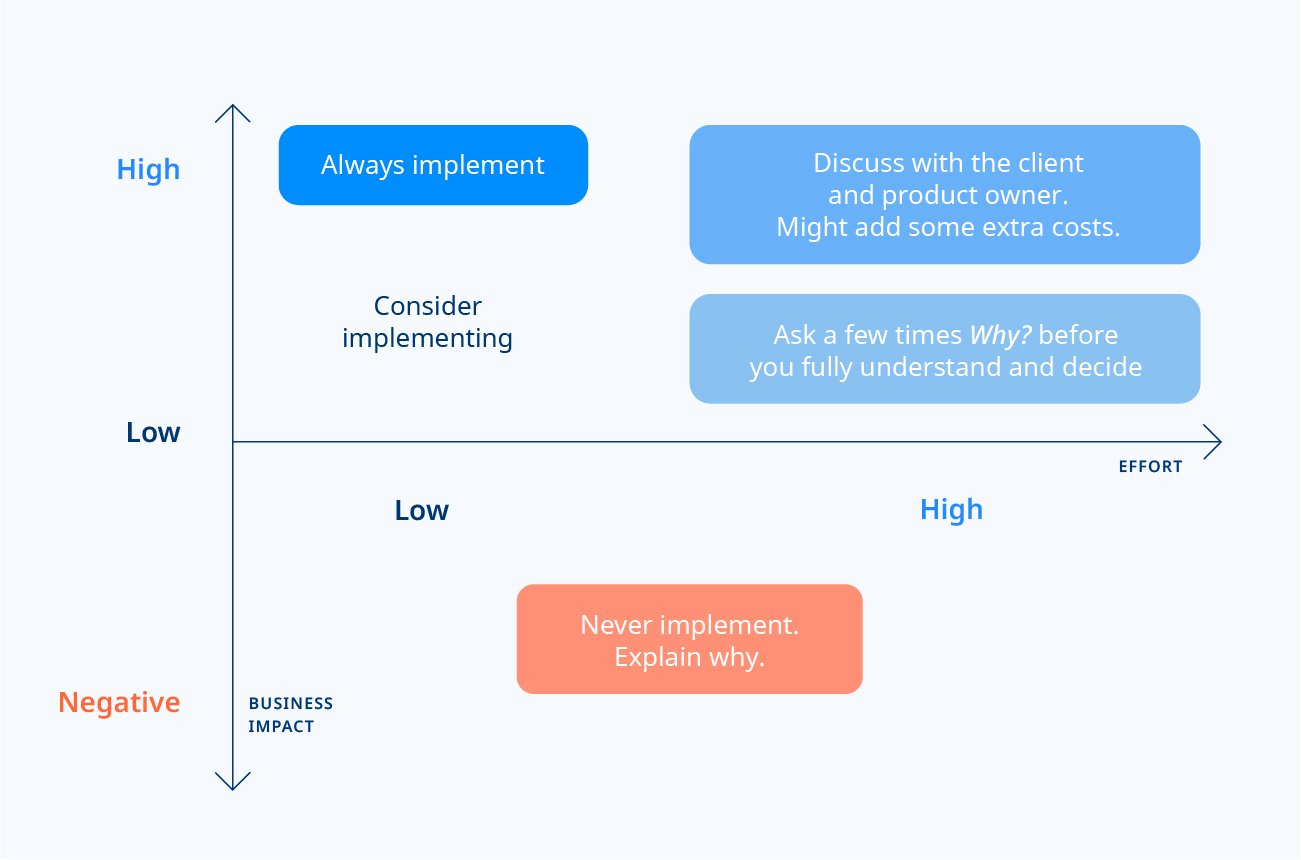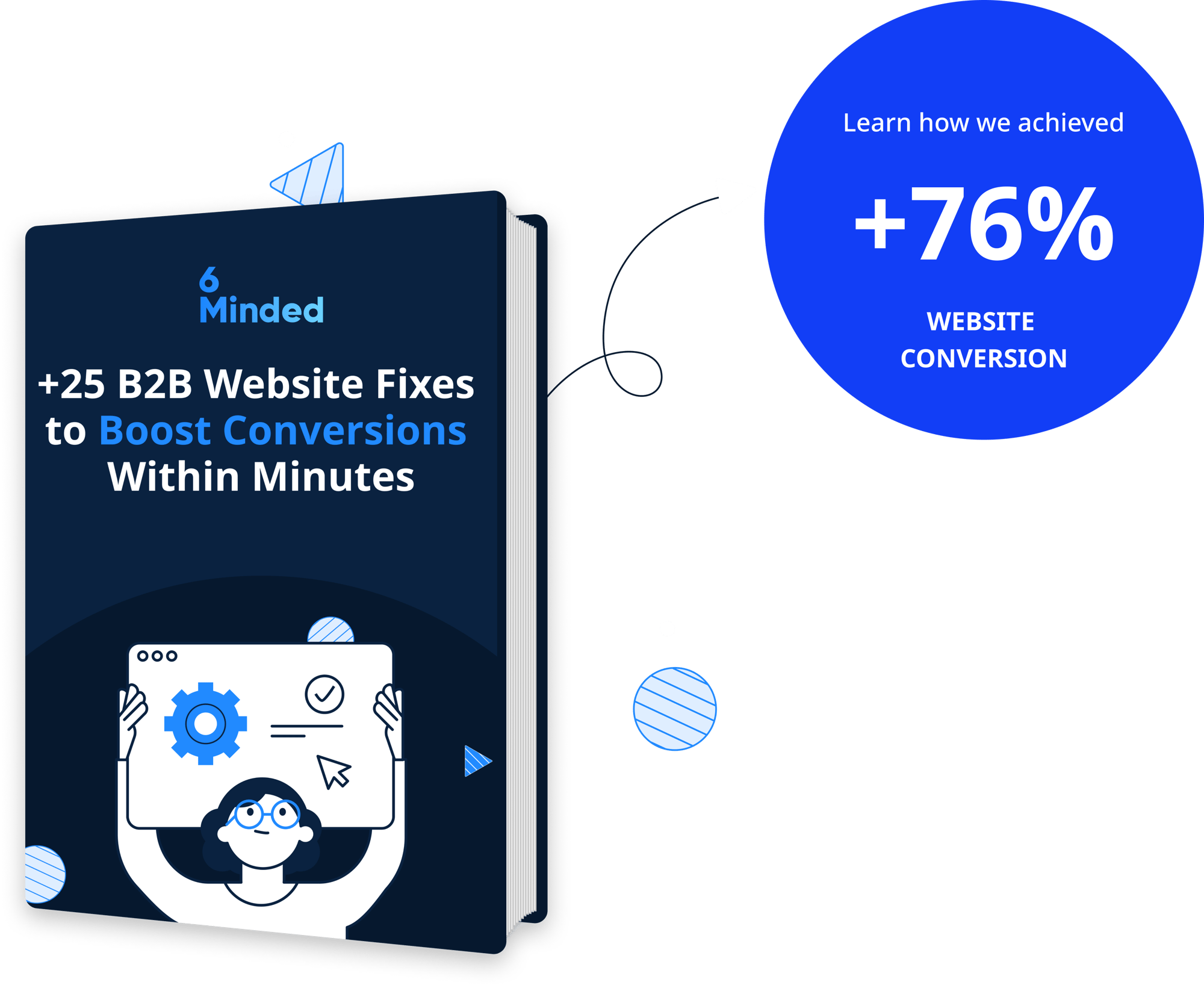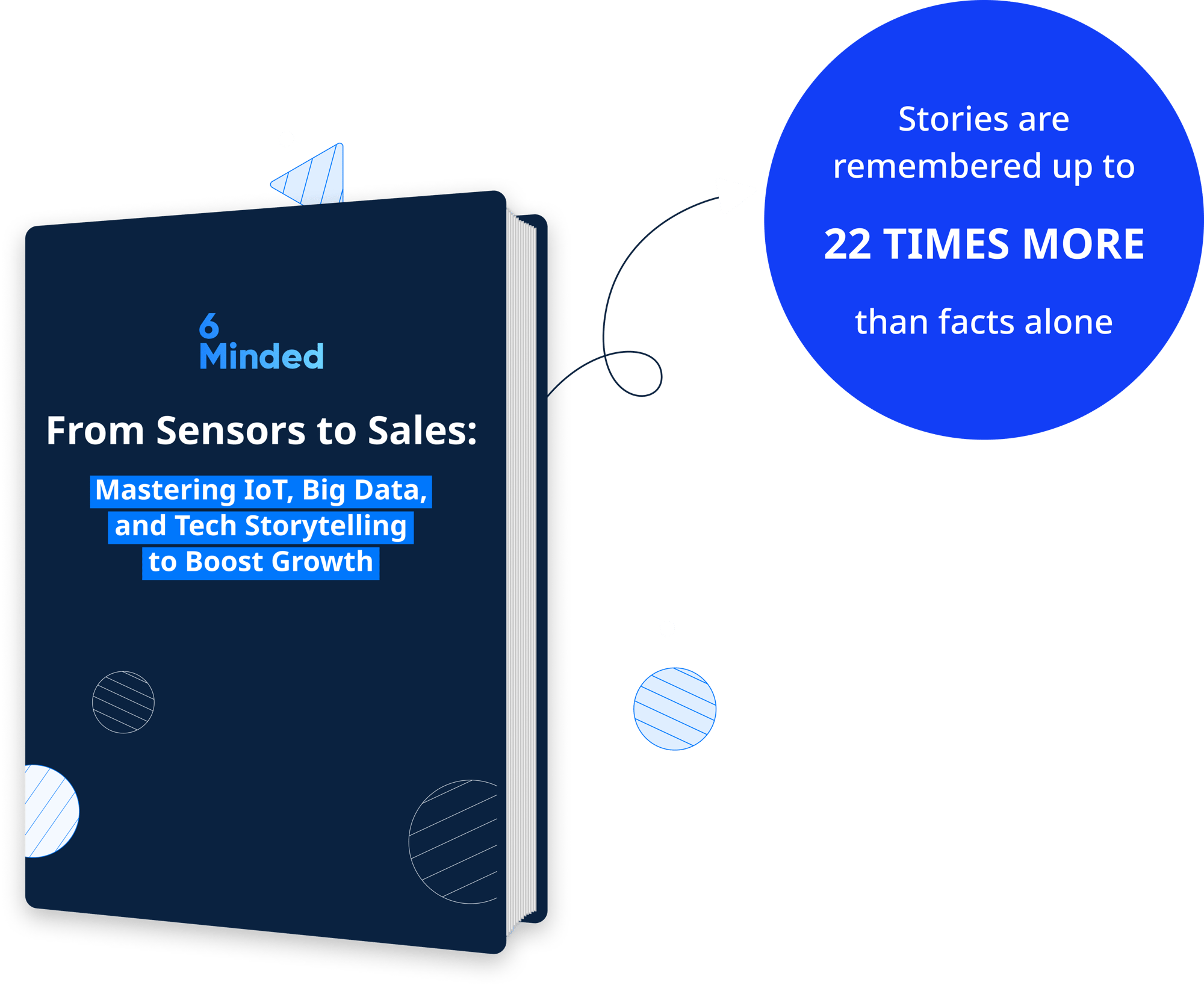Over 4,000 — that’s the rough average number of emails and Notion messages each of our project managers receives from clients every year. That’s around 330 messages per month, excluding client communication that takes place on platforms like Figma, Miro, InVision, or UXPin.
There’s no better proof that at 6Minded, we truly believe in the power of collaboration and communicating with the client. But with these numbers in mind, it’s important to remember that proper client communication can never be one-sided. This means that we don’t always comply with our clients’ suggestions; instead, we discuss and ideate together.
In this blog post, we let you in on parts of our client feedback-handling procedures and show how the idea of partnership is at the core of our collaboration framework.
Client feedback is a process
Depending on your previous experience with marketing agencies, you may think that deciding how to handle each customer email that lands in our inbox is entirely up to product managers.
But while at 6Minded, PMs are the main touchpoint for customers, our client communication management is organized and category-based. This means that every client interaction falls into one of the following categories:
- New production tasks and projects — These include inquiries and requests about website design, content production, HubSpot implementation, and other marketing services from potential customers.
- Client feedback/comments — This category embraces all questions, comments, and client communication regarding ongoing projects.
- Contract/finance details — Invoices, contract terms, conditions, and payment details belong to this category.
- Meeting/availability details — Here, we include all discussions about scheduling, meetings, and interaction between 6Minded and our clients.
- Other — It’s a general category that covers all messages that don’t belong to any of the remaining four types.
Although we address every inquiry individually, each category has its own dedicated set of procedures. Such an approach allows for more time-effective and transparent communication.
As you can expect, communicating with a client mostly falls into the first two categories. So, let’s take a closer look at them and see how we evaluate them.
Assessing the potential
Daily, we receive all kinds of requests from our current customers. Here are some examples:
- One of our clients has asked us to refine their sales process by adding an automation feature that reminds sales representatives to follow up with the prospects. This change will have a positive outcome for their business.
- A client wants to adjust the blog layout we’ve designed. Our designer has developed a three-column format for articles, but the client likes two columns better. Both variants adhere to the brand guide, and the impact on user engagement is minor.
- Lastly, a customer suggests changing the navigation structure just for one subpage on their website. We know that this solution is far from perfect, as it may confuse visitors, which will most likely harm the website’s conversion rate.
Clients make all these suggestions in good faith and with clearly defined goals, be it generating more leads, building brand image, or facilitating sales. These ideas differ in the cost and efficiency needed to achieve these goals.
A part of our work is to spot this difference to tell which suggestions are worth implementing and which provide too little value when considering the effort involved. So how do we do that?
Whenever we receive a new project or client feedback for a current one, we evaluate the feasibility using two simple criteria: impact and effort.
Turning effort into performance
The impact measures the effect a given change will have on your business.
The effort represents the work, time, resources, and investment necessary to implement the change, including the oft-overlooked opportunity cost.
Weighing the two factors against one another allows us to check if the project benefits the customer. It also helps us decide on our next steps. The graph below illustrates the possible scenarios:

For example, we always inform the customer about the potentially increased costs of high-impact solutions. These often require a significant upfront investment but will be hugely beneficial in the long run. Of course, we can’t predict the exact cost in many cases, but we know that it may be higher than initially anticipated. Therefore, we always make sure to acknowledge both the potential ROI and risks of the project.
On the other hand, low-effort/low-impact changes are also worth considering due to the insignificant cost and effort. For instance, it’s often worth launching a one-time ad campaign to check its effectiveness—in the worst case, it’ll be a negligible miss, and in the best, it will help design a much bigger campaign to be successful. And whatever the outcome, we’ll gain valuable experience.
Considering the three examples mentioned before, this framework allows us to see which ones show potential.
The first example (feature automation) is easily the winner, and the last (redesigning page navigation) is a definite no-go. When it comes to introducing layout adjustments, we need to investigate the matter further—if the project is still in the design phase, the change should be simple. However, it may not be worthwhile when the blog is ready, and the content is live.
Client communication: the foundation of a meaningful partnership
We live by the value we deliver to our customers. So, the high-quality outcome is not only in their best interest—it’s our top priority, too.
Controversially as it may sound, this means that our role isn’t to always agree with the customer and blindly follow whatever they ask for. We’ll leave that to outsourcing agencies that only provide the workforce to execute the tasks and nothing more.
As opposed to them, we’re a partner invested in the growth of our clients. As such, we strive to use our expertise to develop marketing solutions that will lead them to a specific objective, even if it means saying ‘no’ to some of their suggestions.
In all our work, we adhere to the following principle: “Be stubborn about your goals and flexible about your methods.” Would you like to see how it works? Get in touch with us now!
Contact Us


 September 2023
September 2023
